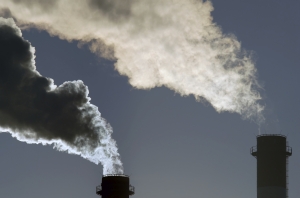Background to the Barossa project
The Federal Court has cleared the path for the development of Santos’s Barossa offshore gas extraction facility (subject to future legal challenges), located 300 km north of Darwin. The Barossa gas field will backfill Santos’ Darwin LNG production facility, which ceased production due to depletion of the Bayu-Undan field in late 2023.
The Barossa gas project has attracted significant attention within the context of the Safeguard Mechanism as a result of its size and high emissions intensity, with LNG produced from Barossa/Darwin LNG expected to have over double the current average Australian emissions intensity. This is mainly due to the Barossa gas field’s high reservoir CO2 content of 18%, which must be separated to allow for pipelining onshore, and to meet product specification for natural gas. Post-separation, current Australian practice is to vent this gas, with the exception being Gorgon’s carbon capture and storage (CCS) project mandated by the WA EPA.
First gas from the Barossa gas project is currently planned in FY26 (CY25), with annual (full) capacity of 3.7 million metric tonnes per annum (MMtpa).
Accounting for a ramp up of production over 2 years, we expect the project to generate around 19 MtCO2-e of gross emissions by 2030 in our Central Case, in the absence of CCS, with annual emissions reaching around 4 MtCO2-e by the end of the decade.
This is forecast to represent approximately 3.5% of gross annual emissions covered by the Safeguard Mechanism by 2030, or 12% of total Australian LNG emissions.
Note that as a committed facility the Barossa project is already included within RepuTex’s modelled forecast scenarios. The Federal Court’s ruling therefore has no additional bearing on our presented outcomes.
Impact on the Safeguard Mechanism and ACCU demand
As a new entrant to the Safeguard Mechanism, Barossa will be subject to best practice baselines, with a zero allowance for reservoir CO2 emissions, but some baseline allowance for other production variables.
Due to its significantly above-average reservoir CO2 content, we currently expect Barossa to support demand for around 13 million ACCUs between FY26-30 in our Central Case, with an annual demand of around 3 million ACCUs by 2030 – prior to the implementation of large-scale emissions reduction actions.
Potential role of CCS to reduce offset demand
The impact of the Barossa project on ACCU demand may be mitigated through the implementation of CCS on separated reservoir CO2.
CCS costs are generally lowest within the gas sector due to the separation of CO2 being part of routine processing, pre-existing infrastructure, and technical knowledge around gas transport and geological properties of potential storage sites.
Santos is actively exploring the use of its depleted Bayu-Undan field as a CO2 storage site, including for the storage of Barossa reservoir CO2. We see potential for the implementation of reservoir CO2 CCS to reduce Barossa’s gross ACCU demand by up to 45%, subject to the implementation timeline, which ranges from the 2020s to 2030s within our modelled scenarios.
The timing and scale of new entrants remains a key watch
While significant, the impact of Barossa is a subset of total new entrants’ to the Safeguard Mechanism, particularly within the LNG and coal sectors, which currently account for around half of Safeguard-covered emissions.
Prior to abatement activities, annual emissions from “new projects” are expected to gradually increase their share of total emissions, accounting 0.6% of emissions in 2024, 5.8% of emissions in 2027, and 11.4% of emissions in 2030. The increasing share of emissions is attributed to both the ramp-up of large new projects, and the closure of existing facilities towards the end of the decade.
We currently forecast three projects – Pluto, Barossa, and Browse LNG – to account for approximately three quarters of business-as-usual emissions from new facilities (prior to on-site emissions reduction actions) if they proceed according to announced timelines.
As noted, emissions from financially committed new projects (and new projects stated in Australia’s Emissions Projections) are accounted for within our Central Case forecast – and our calculated emissions budget for the Safeguard Mechanism – with the adoption of “best practice” baselines reducing their impact on the scheme’s emissions budget, and 2030 point in time target.
If you have any questions on this article, contact our Client Services team via email.
Kind Regards,
The RepuTex Team
Australian Emissions Markets
Access our EnergyIQ platform
Did you know, we have over 1,000+ users of our EnergyIQ platform, from over 150 companies accross Australia-Pacific. Our customers make up Australia’s most active carbon market participants, among them the world’s largest carbon and power market traders, high emitting compliance companies, voluntary entities, carbon project developers, investors, and state & federal policymakers.
Click to learn more about our EnergyIQ platform, or to schedule a demonstration contact our Client Services team by email.














